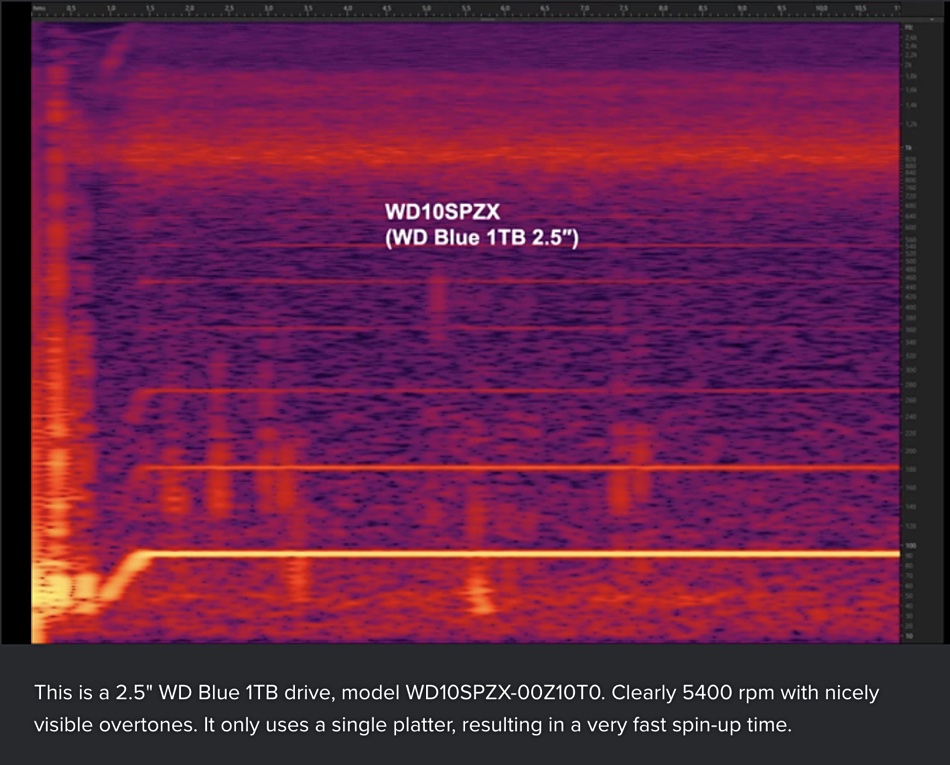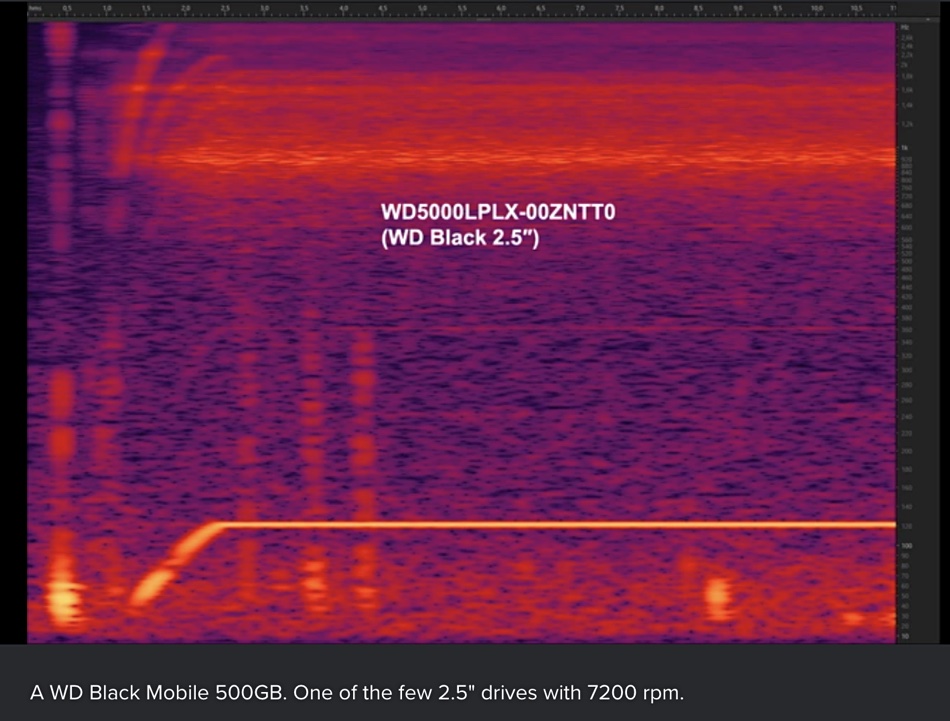Reddit threadsters are suggesting that certain 5400rpm 8TB Western Digital drives are actually rotating faster, at 7200rpm, and they are citing startup sound profiles as evidence.
Update: WD response added below; 5 September 2020.
According to a group of reddit threads, like this one by u/sbjf, WD 8TB EMAZ and EZAZ drives, used in WD’s Elements and My Book external storage products, run hotter and noisier than expected. u/sbif thinks they are downrated 7200 rpm drives, despite their SMART data indicating 5400 rpm rotation.
The reddit posters cite unexpectedly high electricity usage and also sound patterns to help justify this claim.
u/sbif writes: “The direct way to measure rotational speed is via the acoustic frequency profile. If you have a disk spinning at 7200RPM (7200/minute = 120/second = 120Hz) then resulting vibrations will be at this base frequency or integer multiples (overtones) of it (120Hz, 240Hz, 360Hz, …). For 5400RPM this would be multiples of 90Hz instead (180Hz, 270Hz, 360Hz, ..”
Another poster has put up acoustic profile images on the thread, comparing the acoustic startup patterns for 7200 rpm and 5400 rpm drives.
Here’s the pattern for a Seagate 4TB 5400rpm drive;

A Western Digital 1TB Blue 5400 rpm drive:

A WD Black 7200 rpm drive:

A Western Digital Elements 8TB drive classed as 5400 rpm:

There is differentiation between 7200 rpm and 5400 rpm drives until the WD Elements 8TB drive’s acoustic pattern is displayed. Despite being classed by WD as a 5400 rpm drive its acoustic pattern is the same as 7200 rpm drives.
Update; WD response
We asked WD to comment and a spokesperson said: ‘“For select products, Western Digital has published RPM speed within a “class” or “performance class” for numerous years rather than publishing specific spindle speeds.
“We also fine-tune select hard drive platforms and the related HDD characteristics to create several different variations of such platforms to meet different market or application needs. By doing so, we are able to leverage our economies of scale and pass along those savings to our customers.
“As with every Western Digital product, our product details, which include power, acoustics and performance (data transfer rate), are tested to meet the specifications provided on the product’s data sheet and marketing collateral.”
B&F thinks this is effectively saying WD has taken a 7200rpm platform and presented it as a 5400 rpm performance class drive.








